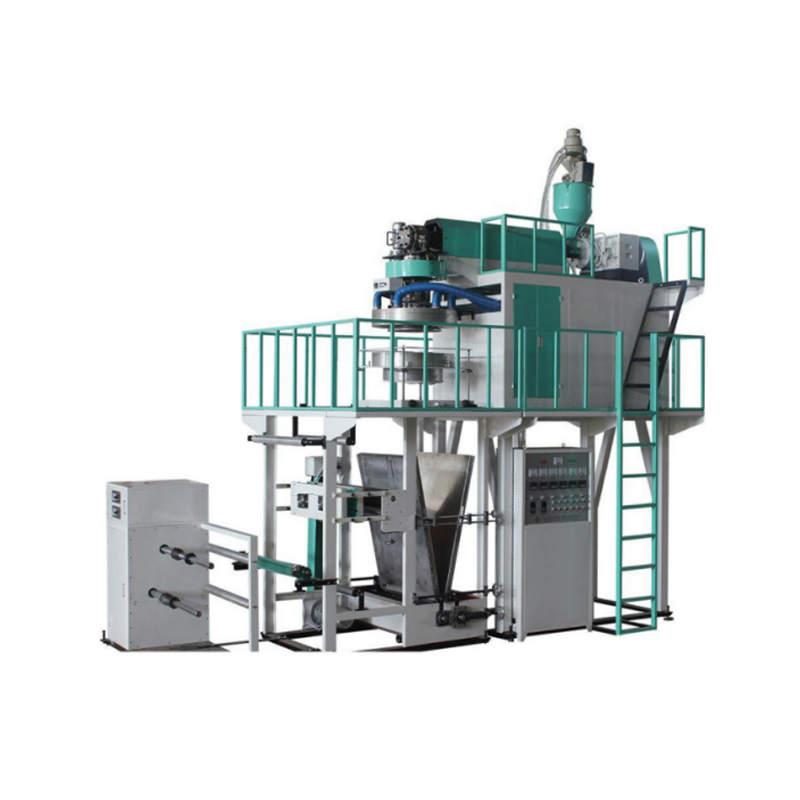PP Film Blowing Machines Transform Packaging with Enhanced Durability and Clarity
 By Admin
By Admin
In recent years, polypropylene (PP) has emerged as one of the versatile and widely used polymers in the flexible packaging industry. With the rise in demand for lightweight, strong, and recyclable packaging, PP Film Blowing Machines have become a cornerstone technology for manufacturers aiming to produce high-quality PP films efficiently. These machines, specifically designed to handle the distinct physical properties of polypropylene, offer unique performance characteristics that differentiate them from other film extrusion systems.
1. Thermal Stability and Processing Precision
Polypropylene’s higher melting point compared to polyethylene requires specialized machine components and precise thermal management. PP Film Blowing Machines are equipped with advanced screw designs and high-performance heating zones that maintain stable processing temperatures typically between 200°C and 280°C. These features prevent polymer degradation and ensure consistent melt flow.
The precision temperature control also enhances the melt homogeneity, to better film clarity, uniform thickness, and overall product quality. These machines often utilize digital temperature controllers and real-time melt pressure sensors to maintain extrusion conditions, which is critical when producing films for food contact or medical applications.
2. Optimized Screw and Die Designs for Efficient PP Processing
Due to polypropylene’s higher viscosity and crystallinity, PP Film Blowing Machines incorporate specialized screws with longer compression ratios and mixing zones to improve melting efficiency and homogenization. This results in smoother extrusion flow and reduces issues like melt fracture or gel formation.
The die design is also optimized to manage the increased melt pressure, ensuring stable bubble formation during film blowing. Some models feature automatic die gap adjustment to fine-tune film thickness and reduce scrap rates.
3. Enhanced Film Mechanical Properties
PP films produced on these machines exhibit tensile strength, stiffness, and impact resistance—key for packaging applications requiring durability and resistance to puncture or tearing. These properties make PP films ideal for uses such as heavy-duty bags, woven sack lamination, and stand-up pouches.

Moreover, PP films have a higher melting point than polyethylene films, making them suitable for hot filling and heat-sealing processes where temperature resistance is crucial.
4. Clarity and Gloss
One of polypropylene’s valued characteristics is its ability to produce films with clarity and high gloss, making it a choice for retail packaging where visual appeal drives consumer choice. PP Film Blowing Machines are engineered to preserve this optical quality by controlling cooling rates through precision air ring systems and bubble stability controls.
Stable bubble size and uniform cooling prevent film haze and improve transparency, enabling high-quality printing and branding on finished packaging.
5. Increased Production Speeds and Output
Modern PP Film Blowing Machines are designed to run at high throughput rates, ranging from 150 to 500 kg/hour depending on model and film thickness. Innovations such as servo motor drives, automated bubble stabilization, and intelligent film thickness control help maintain stable operations at higher speeds without compromising film quality.
This increased productivity reduces overall production costs and supports just-in-time manufacturing demands.
6. Multi-Layer and Co-Extrusion Capabilities
While PP is often processed as a mono-layer film, many advanced PP Film Blowing Machines support multi-layer co-extrusion to combine PP with other polymers such as PE or EVOH. This enables manufacturers to produce composite films with enhanced barrier properties, sealability, and mechanical strength.
The co-extrusion feature broadens the application scope of PP films, allowing entry into markets like food packaging where oxygen and moisture barriers are essential.
7. Energy Efficiency and Automation
Recognizing the energy-intensive nature of PP processing, manufacturers have integrated energy-saving components like variable frequency drives (VFDs), low-friction screws, and insulated heating zones. Combined with automation systems that include touchscreen HMI interfaces, process data logging, and remote diagnostics, these features optimize energy use and minimize downtime.
Automation also facilitates quick changeovers between product runs, enhancing flexibility and reducing labor costs.




